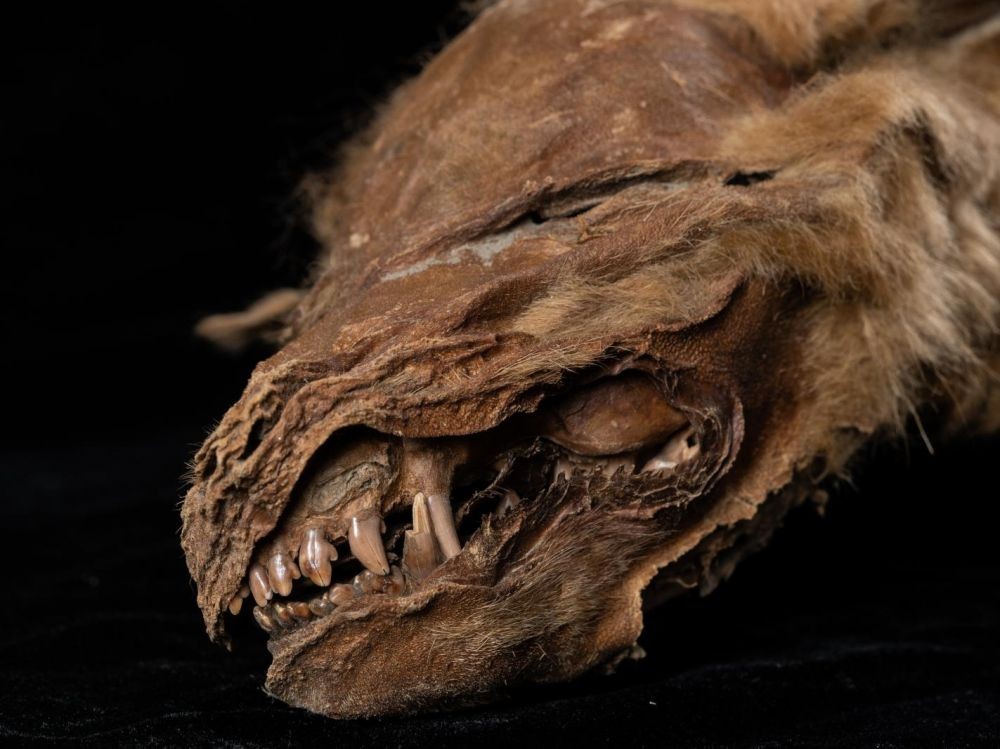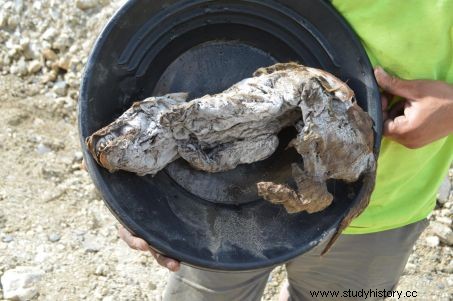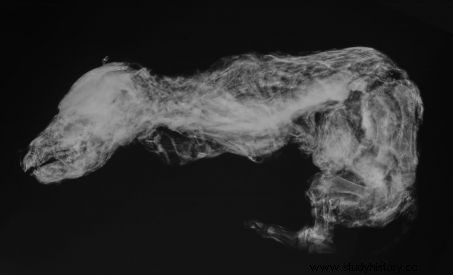Very well preserved, this mummy of a loupiote (female cub) reveals details about the animal's short life.

Cub mummy head found.
Zhùr is the name given to the mummy of this cub found in Yukon, Canada. The discovery was made by a miner looking for gold who was trying to melt the frozen mud with great blasts of water:suddenly, trapped in the ice, the particularly well-preserved mummy appeared to him. It was then studied by paleontologists from the University of Des Moines, in Iowa in the United States.
A dead female cub in her den
Almost completely preserved in permafrost, this cub is the most complete mummy ever discovered for this animal. In fact, he's only missing his eyes. Thanks to this exceptional preservation, scientists have had access to a wealth of information. First, they tried to understand how this mummy could have been so well preserved:they estimate that the animal must have died on completely frozen ground and was covered almost immediately after its death. Moreover, it certainly happened in a protected place otherwise the corpse would show signs of decomposition or scavenger bites. They therefore conclude that the loupiote, because it is indeed a young female that it is, is probably dead in its den which collapsed, for an unknown reason.
Analysis of the body indicates that she must have been around seven weeks old and she had been fed correctly and shortly before her death. The contents of the stomach reveal the presence of mainly aquatic remains, in particular salmon. Which is induced by its direct environment, close to water.

The Cub Mummy. Credit: Government of Yukon .
More and more mummies to discover
Zhùr's genome analysis has also confirmed that she is descended from ancient Russian, Siberian and Alaskan wolves, which are also the ancestors of modern wolves. It is named after the Tr'ondëk Hwëch'in, the people who live in the area where it was found. They consider it an important relic and so it will be on display at the Yukon Beringia Interpretive Center in Whitehorse, which is the only city in the area. The scientists present their results in an article published in the journal Current Biology .

The mummy seen in X-rays. Credit:Government of Yukon.
In conclusion, the authors of the study say they expect more and more such discoveries because of the global melting of permafrost, caused by global warming. So recently, we mentioned the discovery of a perfectly preserved cave bear, too. But the permafrost is not only home to large animals, many viruses also live there, some almost 30,000 years old.
